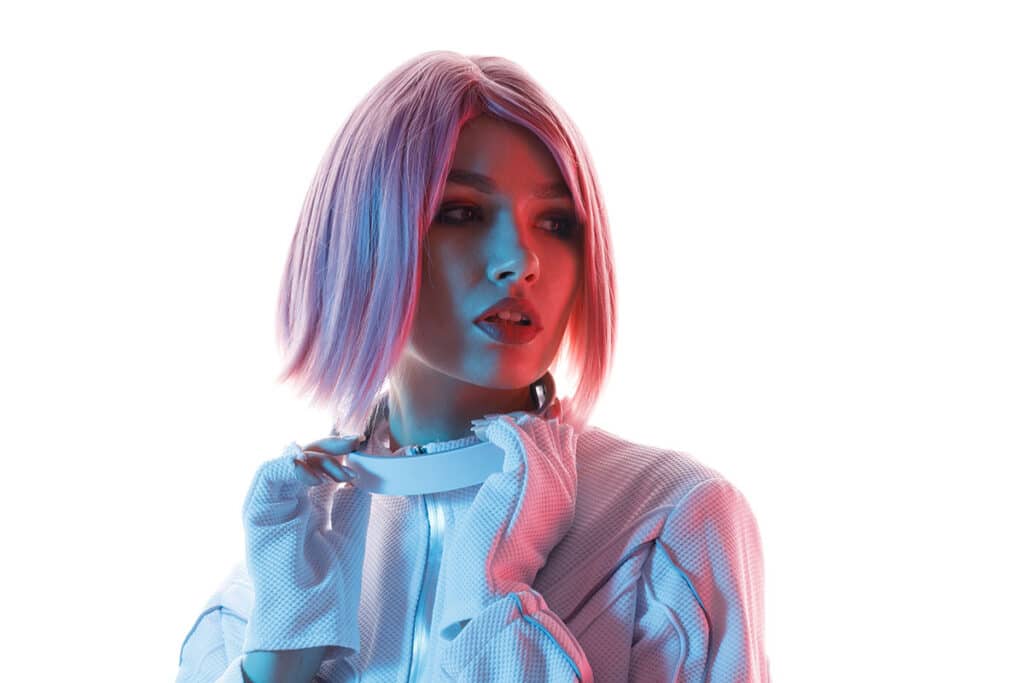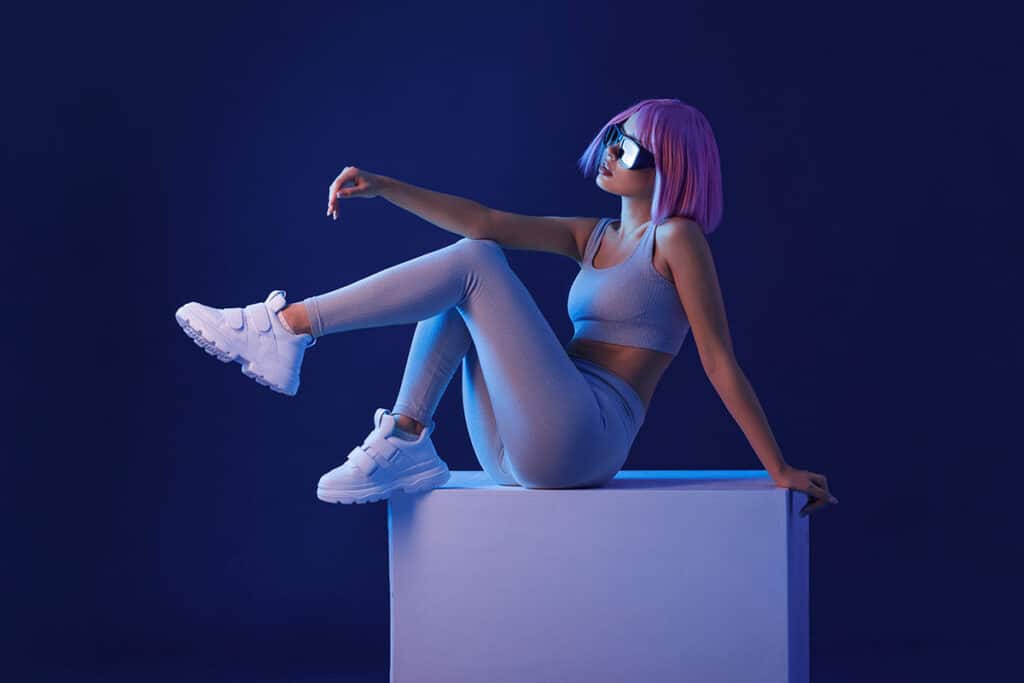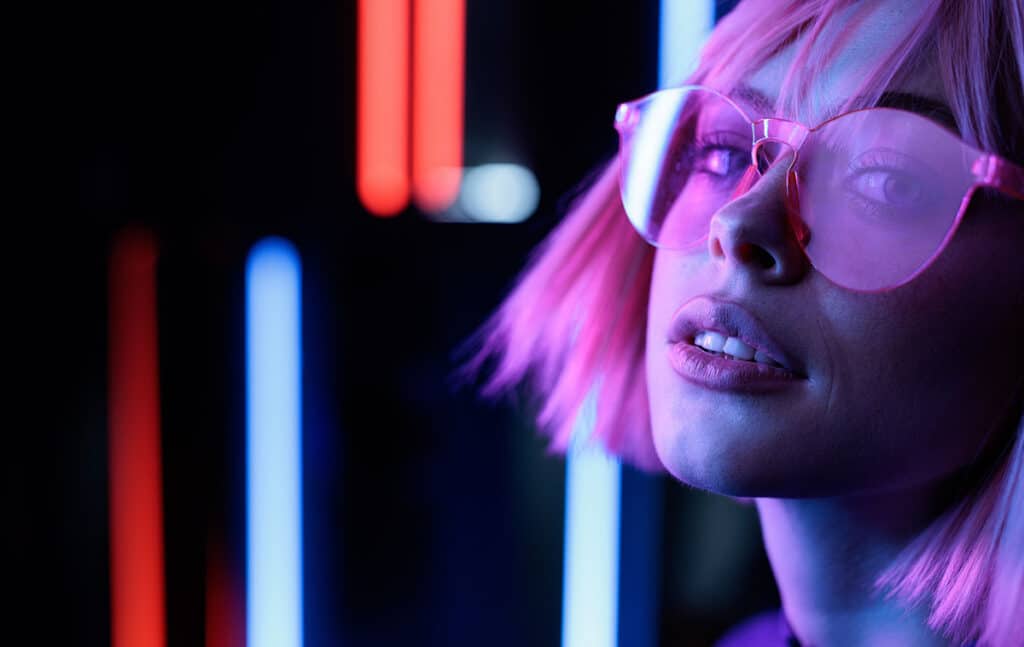The Impact of AI on Modelling Photography: What You Need to Know
Artificial intelligence (AI) has revolutionised numerous industries over the past few years, and modelling photography is no exception. As an aspiring model in the UK, it’s important to understand how AI is shaping the industry you’re entering, as it could directly affect your career.
From automated retouching to AI-powered styling tools, modelling photography is evolving quickly. This article explores how AI is influencing modelling photography and what it means for you as a model, from the opportunities it creates to the challenges it presents.

1. AI and Automated Retouching
One of the most significant ways artificial intelligence is impacting photography is through automated image retouching. Traditionally, photographers or retouchers/photo editors would spend hours perfecting images, removing blemishes, adjusting lighting, and enhancing skin tones. With AI, this process can now be done in minutes. Tools like Adobe Photoshop’s Neural Filters and AI-powered apps such as Luminar Neo allow photographers to retouch images with precision and speed. Even phones now have AI-powered editing functions.
For aspiring models, this means your photos could be edited more quickly, and you’ll see the final results sooner. While this sounds like a win-win, it does raise some concerns. Models are already expected to have flawless skin and perfect proportions in edited images, and AI can exaggerate this even further. Some argue that the rise of AI in retouching may increase unrealistic beauty standards, making it harder for models to present a natural or authentic look. At a time when many companies (such as Dove) are trying to undo the damaging effects of unrealistic beauty, this could be counterproductive to that cause.
What does this mean for you?
Being aware of the impact AI can have on your images is important. Make sure you understand how your images are being edited and, when possible, work with photographers who value authenticity and won’t over-edit your natural features. Your unique look is your strength, and it’s essential not to lose that in overly edited AI images.
Be aware that it isn’t just the odd blemish or stray hair that could be edited. Your body proportions, skin tone, and eye colour can all easily be changed. Be sure to talk to the brand/photographer ahead of time if this is a concern to you, and make sure to read your contract thoroughly so you understand exactly how your images are expected to be used.

2. AI in Model Selection and Casting
Artificial intelligence is also making waves in how models are selected for jobs. In the past, agencies and casting directors would sift through hundreds, if not thousands, of portfolios to find the right fit for a campaign. Now, AI systems are being developed to streamline this process by scanning portfolios, social media profiles, and even video auditions, using algorithms to identify models who fit the desired criteria based on certain characteristics like facial symmetry, body proportions, and overall look.
This AI-driven approach can help casting agents find the perfect model more efficiently, but it’s important to note that it may also create bias. AI algorithms are often trained on existing data, meaning they might prioritise certain types of looks over others, potentially narrowing the pool of opportunity for models who don’t fit the AI’s predefined standards.
What does this mean for you?
To stay ahead of the curve, keep your digital portfolio up to date and be mindful of the content you share on social media. AI tools may scan your social profiles as part of the casting process, so presenting a polished yet authentic image online is key. Also, don’t let the use of AI deter you. While it may feel like a computer is assessing your worth as a model, human casting directors still have the final say in many decisions.

3. AI-Generated Models and Virtual Influencers
Perhaps one of the most controversial impacts of AI on modelling photography is the rise of AI-generated models and virtual influencers. Companies are now creating entirely digital models using AI, such as Shudu Gram, a virtual model with a huge Instagram following. These AI models are created to look hyper-realistic and can be programmed to wear different outfits, strike different poses, and appear in campaigns without ever stepping in front of a camera.
For brands, this is a cost-effective solution. There’s no need to book a photographer, studio, or makeup artist. AI models can work 24/7, don’t need to travel, and can be tailored to suit any brand’s aesthetic. This could potentially reduce the demand for human models in certain areas, particularly in e-commerce or fast fashion.
What does this mean for you?
While the rise of virtual models may sound intimidating, it’s important to remember that human models bring something AI simply can’t replicate – personality, emotion, and authenticity. Brands and audiences still value the connection and relatability that real people provide. However, being aware of this trend is essential. To stand out, focus on building your personal brand and showcasing your unique qualities that AI can’t compete with, such as your personality, storytelling ability, and emotional range.
Remember also that many audiences are now actively seeking out more authentic imagery, and AI goes completely against this. As humans, we will never be able to measure up to the perfection that AI can easily exhibit, and this is a huge turn-off for many audiences, as well as brands. Brands who wish to sell to humans are not likely to gain much trust if they sample their clothing on AI, as it will never give an accurate depiction of the clothes.

4. AI in Styling and Wardrobe Selection
AI is also changing the way styling works in photoshoots. Some platforms now use AI to suggest wardrobe choices, accessories, and even makeup looks based on the model’s appearance and the overall theme of the shoot. This can help photographers and stylists create a cohesive look more quickly, reducing time spent planning and on-set adjustments.
As a model, this means you might encounter AI styling assistants during photoshoots. While this can streamline the process, it’s important to voice your opinions. AI might suggest outfits or looks, but it’s still up to you and the stylist to decide what works best for you. Understanding how AI-generated suggestions work can help you collaborate more effectively and ensure your personal style isn’t overshadowed by automated recommendations.
What does this mean for you?
Be proactive in your photoshoots and trust your instincts. AI might offer wardrobe suggestions, but it doesn’t know you as well as you know yourself. Communicate openly with photographers and stylists to ensure that your unique look and personality come through in the final images.
Remember too that AI works using existing data. That means it’s unlikely to be able to provide anything unique or creative.

5. AI for Enhancing Photography Techniques
AI is also transforming the technical aspects of photography itself. AI-driven cameras and software can now adjust lighting, angles, and even the model’s pose automatically to create the best possible shot. AI can detect minor details that a photographer might miss, such as shadows or reflections, and correct them in real-time. This leads to quicker, more efficient photoshoots with fewer mistakes.
For aspiring models, this could mean faster turnaround times during shoots and less waiting around while adjustments are made. However, it also places more emphasis on getting the perfect shot quickly, as AI can automate many aspects that used to require trial and error. This could increase the pressure on models to perform flawlessly in a shorter time frame.
What does this mean for you?
The key here is adaptability. As technology evolves, so will the expectations placed on you during photoshoots. Practice different poses and expressions so you can work efficiently, but don’t be afraid to ask for a break if the pace is too fast. AI might be speeding up the technical side of photography, but human creativity and connection remain at the heart of great modelling.

6. AI and the Future of Modelling Contracts
Finally, AI is starting to play a role in the business side of modelling. Some agencies and brands are using AI to help with contract negotiations, predicting trends, and even determining how much a model should be paid based on data analytics. This could make the business side of modelling more transparent, but it also raises questions about how much control models have over their own rates and working conditions.
What does this mean for you?
As AI becomes more integrated into the business of modelling, it’s important to stay informed about your rights. Make sure you fully understand the terms of any contract you sign, and don’t be afraid to seek advice if you feel unsure about how AI might influence your career. Staying educated and aware of industry changes will help you navigate this evolving landscape confidently.
Final Thoughts
AI is undoubtedly transforming modelling photography, from how images are edited and models are cast to the introduction of virtual influencers. As an aspiring model in the UK, it’s important to stay informed about these changes and adapt accordingly. While AI offers incredible advancements, it’s essential to maintain your authenticity, personal brand, and human connection – the qualities that no algorithm can replicate.
By staying ahead of AI trends and leveraging technology to your advantage, you can thrive in the ever-evolving world of modelling photography. Keep building your skills, stay informed, and always remember that no matter how advanced AI becomes, it can never replace the unique qualities that make you, you.